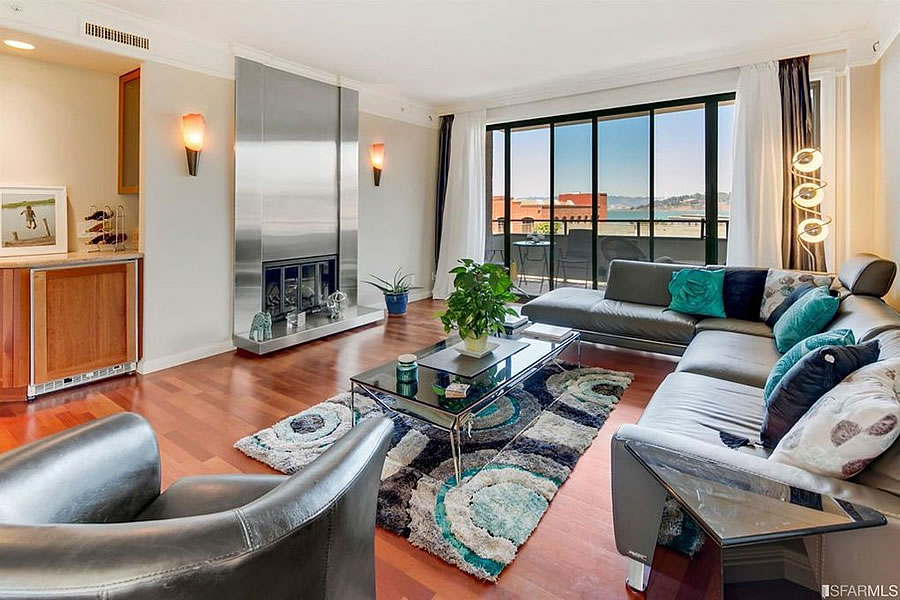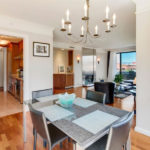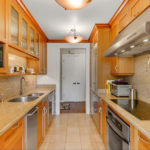Built as a two-bedroom but since converted into a 1,509-square-foot one-bedroom with a den/nursery/master suite and Bay Bridge views at the base of Telegraph Hill, unit #314E in the classic building at 101 Lombard Street was purchased for $1,398,000 in May of 2014.
The corner unit returned to the market priced at $1,549,000 six weeks ago, a sale at which would have represented total appreciation of 10.8 percent over the past four years on an apples-to-apples basis.
Reduced to $1,495,000 after two weeks on the market and then changed to $1,399,000 on Halloween, the sale of 101 Lombard Street #314E has just closed escrow with a contract price of $1,397,500 or roughly .04 percent under the price the North Waterfront condo fetched in mid-2014.








Until there is a significant decrease in the median YOY price increase (which I think will happen in the coming year) these “flat” sales are noteworthy but tend to go against the recent median YOY price gain of about 9%. Yes, median price is not a totally accurate reflection of what is happening but it is one of the few broad measures of residential real estate activity available.
While movements in the median sale price are a great measure of what’s selling, they’re not a great measure of actual appreciation or changes in value and are susceptible to changes in mix, as opposed to movements in the Case-Shiller Index which, unfortunately, blends San Francisco, San Mateo, Marin, Contra Costa and Alameda into the “San Francisco” index and is imperfect in factoring out changes in values due to improvements versus appreciation.
Note specifically that this particular sale at $1.398M is above the SF median of $1.350M so even with its poor performance it still pulls the median up. In fact even if a property first sold for $2M, then dropped to $1.398M it would still raise the median.
So far from apples-to-apples (or CS) ‘going against’ the median, it’s entirely possible for prices to go down while the median goes up.
Yes, these are imperfect measures but -that said – there seems to be a broad plateauing of prices. Even in some of the other parts of the BA. Certainly at the top tier and also now in the middle tier. It’s not unreasonable that the bottom tier will start to reflect some price weakness in the coming year.Altogether, after a while of this, the median price should show less robust YOY gains. It has ticked back a bit in recent months but IMO we will see a more significant drop in the coming months.
It’s not just a matter of some slight error, the median is just of measure of what is currently selling regardless of how the price for the same home has changed over time. A rising median just means that more high end homes are currently being sold.
The textbook example used to illustrate this is the auto market. Nearly every single car sold drops in value from the moment it drives off the lot and that value keeps declining. Yet as consumers moved from 70’s era econo boxes to larger SUVs with progressively more features, the median car price was pushed up.
The median price can travel in completely the opposite direction from the value of individual homes (or cars)
“it’s entirely possible for prices to go down while the median goes up.”
Not in the aggregate. The car analogy is bogus because you are conflating new cars with used cars. If JNJ has a scandal and it’s stock price plunges while the S&P500 goes up, it’s because the average value of the remaining 499 stocks went up.
New homes get built and older ones expanded and renovated and the median price for homes conflates this. The median priced home you buy in 1990 does not magically become the median priced home of 2018 just as the median priced car you buy in 1990 doesn’t become the median priced car of 2018. And if you are hung up on the new vs old, just imagine that in both cases you buy 2 years old. i.e. in 1990 you buy a 1988 car/home and in 2018 you compare prices to 2016 model cars/homes.
The median price is merely the point where half the homes currently sold lie above and half below. What those homes previously sold for doesn’t factor in at all. To your stock example imagine that Berkshire Hathaway started crashing down on increasing volume while all other stocks remained flat. At a hefty share price of $330,000 per share it would increasingly pull the price of the median share sold up as it’s sales volume increased even as the individual shares were dropping in price.
I’m sorry, 101 Lombard is a “classic” building? It was built in 1983.
It does seem dated in open space and window size. Is the galley kitchen common in newer construction?
Also elided is that this went from a 2/2 to a 1/2.